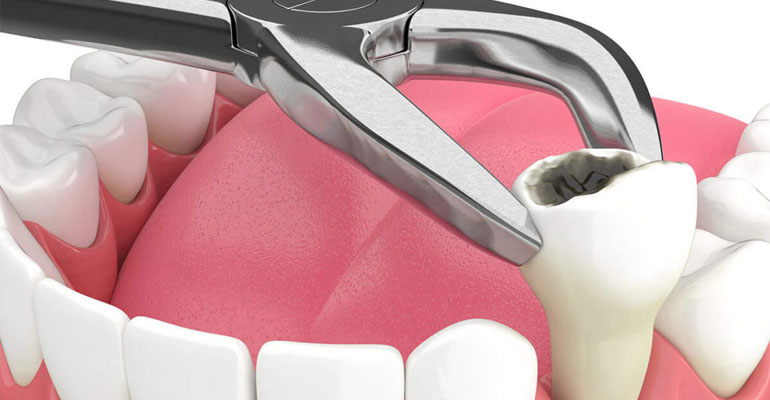Tooth Extractions
Tooth extraction is a common dental procedure performed for various reasons, such as severe decay, advanced periodontal disease, overcrowding, or trauma. While preserving natural teeth is a priority, there are instances where extraction is necessary to maintain overall oral health.


Reasons for Tooth Extraction:
1.Severe Decay:
Teeth that are extensively decayed beyond the point of restoration may require extraction to prevent the spread of infection.
2.Periodontal Disease:
Advanced gum disease can lead to tooth mobility and bone loss, necessitating the removal of affected teeth.
3.Overcrowding
Orthodontic treatments may involve the extraction of a tooth to create space for proper alignment.
4.Impacted Wisdom Teeth:
Wisdom teeth, also known as third molars, may need to be extracted if they are impacted or causing issues such as pain, swelling, or infection.
5.Fractured or Damaged Teeth:
Teeth that are severely fractured or damaged, with little chance of successful restoration, may be extracted.
Types of Tooth Extractions:
1.Simple Extraction:
Involves the removal of a visible tooth that is easily accessible. The dentist uses forceps to loosen the tooth before extraction.
2.Surgical Extraction:
More complex than a simple extraction, surgical extractions are performed on teeth that are not easily accessible or require sectioning before removal. This often includes impacted wisdom teeth.
Conclusion:
Tooth extraction is a common and often necessary dental procedure performed with the goal of preserving overall oral health. Following post-operative care instructions and attending follow-up appointments are essential for a smooth and successful recovery. Dentists carefully evaluate the need for extractions and discuss appropriate replacement options when necessary.
